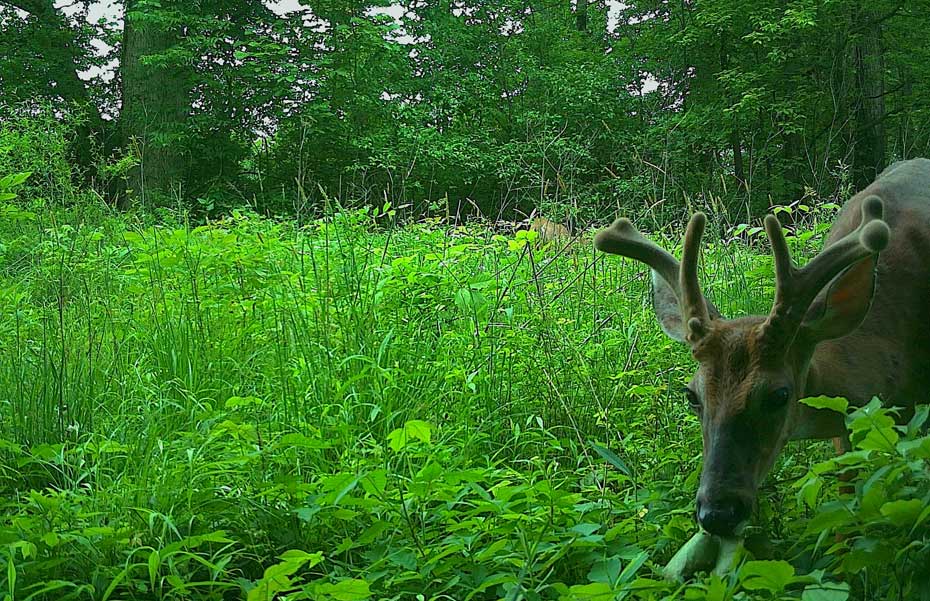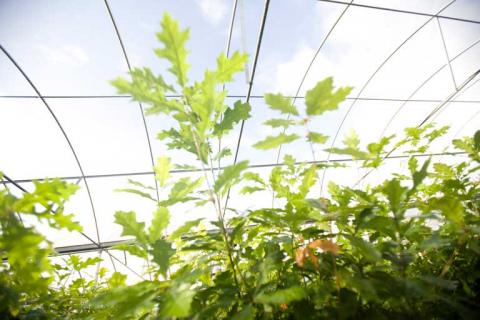Branden Throgmorton of Franklin, Indiana, about 20 miles from Indianapolis, is a newcomer to the Mossy Oak GameKeeper ProStaff, joining the team about a year ago.

When we first bought our property, we posted it and put a stop to the “free access” our neighbors previously had so we could manage it for wildlife effectively. However, we haven’t had many problems with trespassing. For the most part, our neighbors have respected our wishes to not have an open-land policy on our property. The signs seemed to have worked. By going to the neighbors, talking to them personally and letting them know what we’re trying to accomplish on our land and posting the land, they better understood why we more or less closed the door on our land to the public. We also explained that if we could improve the habitat on our land, improve the availability of food for wildlife here and provide a sanctuary for the whitetails that our efforts to manage the land also would increase the amount of wildlife our neighbors would have on their lands, too. The game would move back and forth from our property to their properties.
I’m trying to help the other lands surrounding my property develop a wildlife management mindset. We’ve found that the neighbors around my property either don’t hunt at all or will harvest whatever game they can. However, I believe the gamekeeping philosophy and preaching the gospel of gamekeeping is an on-going program as land changes hands, and new people become our neighbors. Parcels of land also change sizes, too. Having a quality management program in an area always will be a challenge. But hopefully we can get people started thinking about what’s best for wildlife and not just thinking of what’s best for themselves.
My wife has always enjoyed the hunting and the harvesting portion of GameKeepers, but I have become more interested in the wildlife management part of our land. I enjoy getting out on my land and being a part of the land and the growth of the wildlife on this property. I think my wife also is starting to enjoy the management side of gamekeeping, too. She helps me plant the trees and build the cages I put around the trees. But she’s not so interested in putting in time on the tractor.
I took a nice buck with my bow last season that would score about 135 inches. The buck came in to within 15 yards of my stand. That’s the first deer we’ve harvested on property. That was a very neat feeling. I feel confident that our hunting only will get better as we continue to improve the land and the food for wildlife on it. I think the tree plantings will be a long-term source of food for the animals, and the food plots I put in during the spring will provide the nutrients that the bucks, the does and the turkeys need. I planted some white and red clover, orchardgrass and Timothy grass. The clover didn’t seem to do well when we first planted it due to our region not having much rain. But with the rains we’ve had later in the spring, it seems to have taken hold in the first two weeks of June. Right now I have 3- to 4-inch tall clover.
We’ve been seeing a number of deer and some turkeys in our clover patches. /our-obsession/blogs/conservation/clover-provides-year-round-food-for-wildlife From the deer we’ve seen this summer, I think we’ll have some impressive bucks to hunt this fall. We’ve also set aside a place on the back side of our property that’s difficult to get into. We’ve decided not to hang tree stands and instead use it as a sanctuary. I have put out trail cameras on the edges of that sanctuary, and that’s where we’ve seen many bigger bucks moving into and out of that sanctuary. The sanctuary is only about 3-4 acres. I’d prefer to have a larger sanctuary, but with only 32.5 acres, setting aside more land than that for a sanctuary is hard.
In the future, I hope to manage our land’s invasive species better, and we’ve already got funding from NRCS for 2019 to buy what we need to make that happen. We also plan to work on our timber stand and improve that and do edge feathering. When we bought the land, it was farm land up to the edge of the woods. We’re trying to change that farm land into more of a pasture. We’re cutting trees right on the wood line to have the property not go from woods to open lands but have a better edge to separate the types of terrain to create more of a transition area where small game and upland birds will have places to hide and nest. Then the land will change from a pasture to a brush area and then into woods.
For more information about GameKeepers and their practices, go to http://www.gamekeepersclub.com.



























